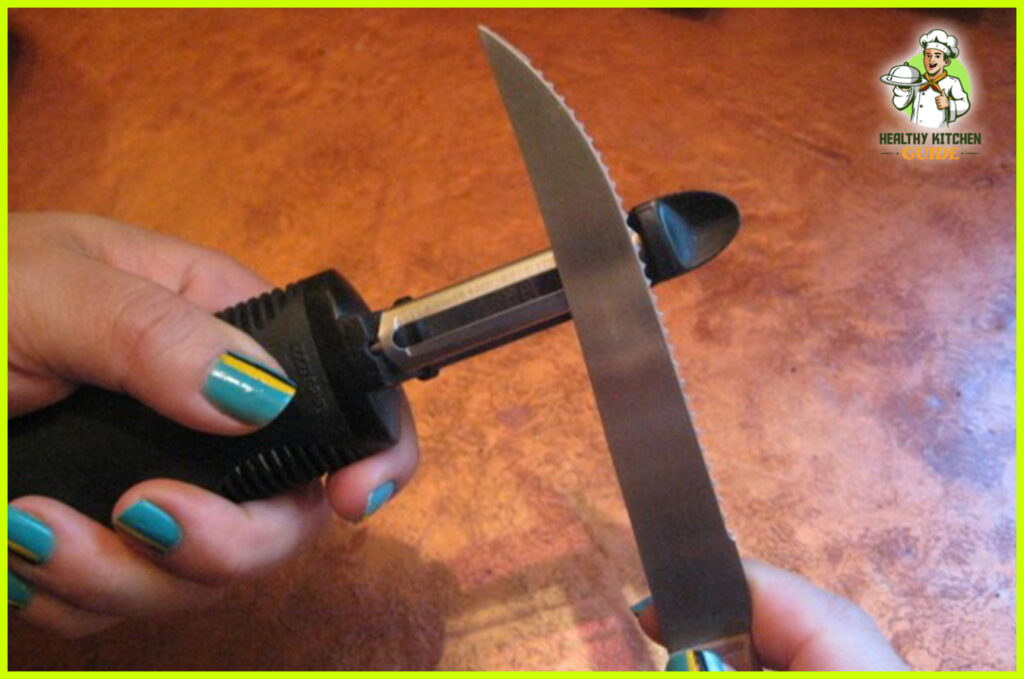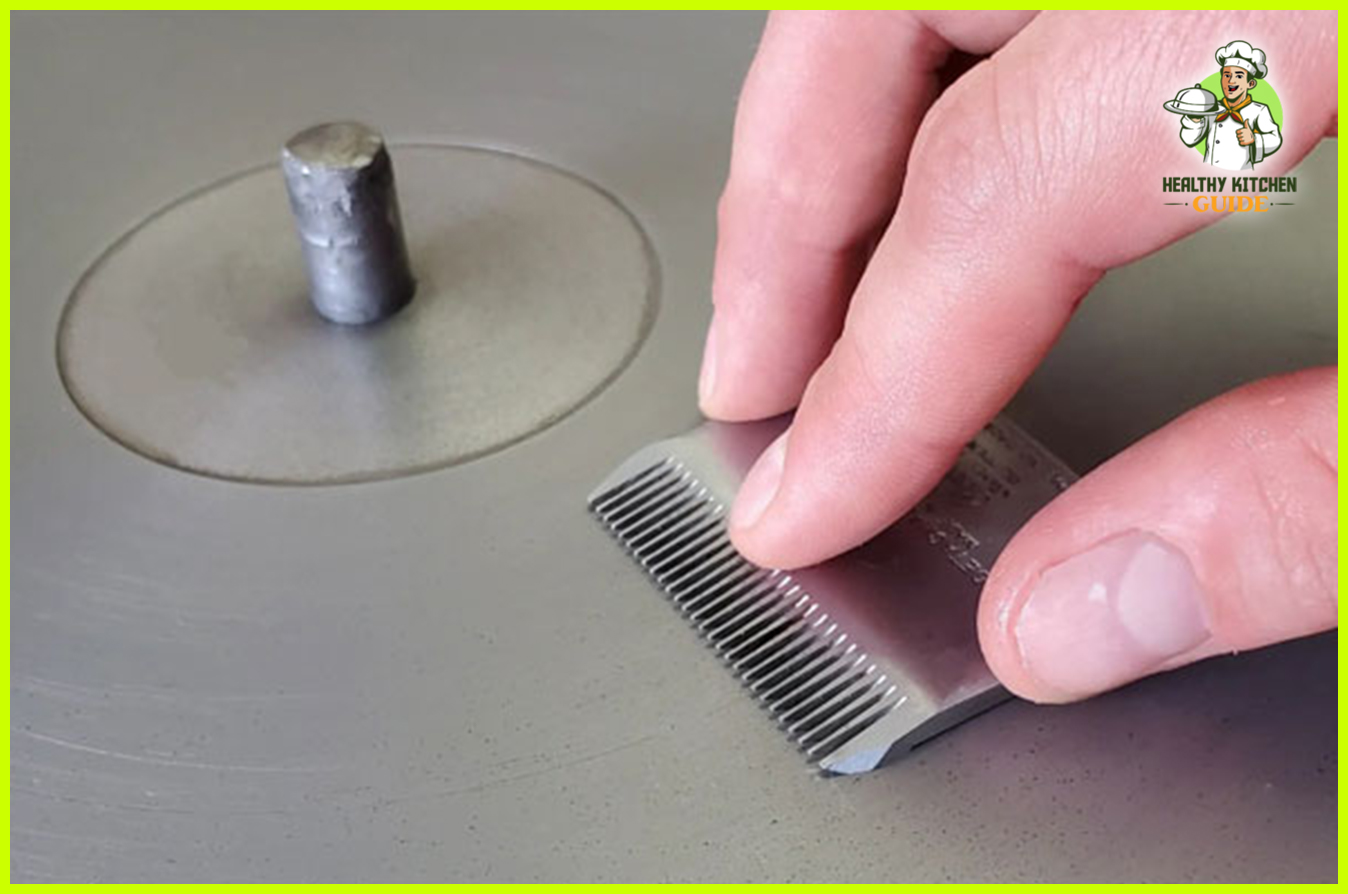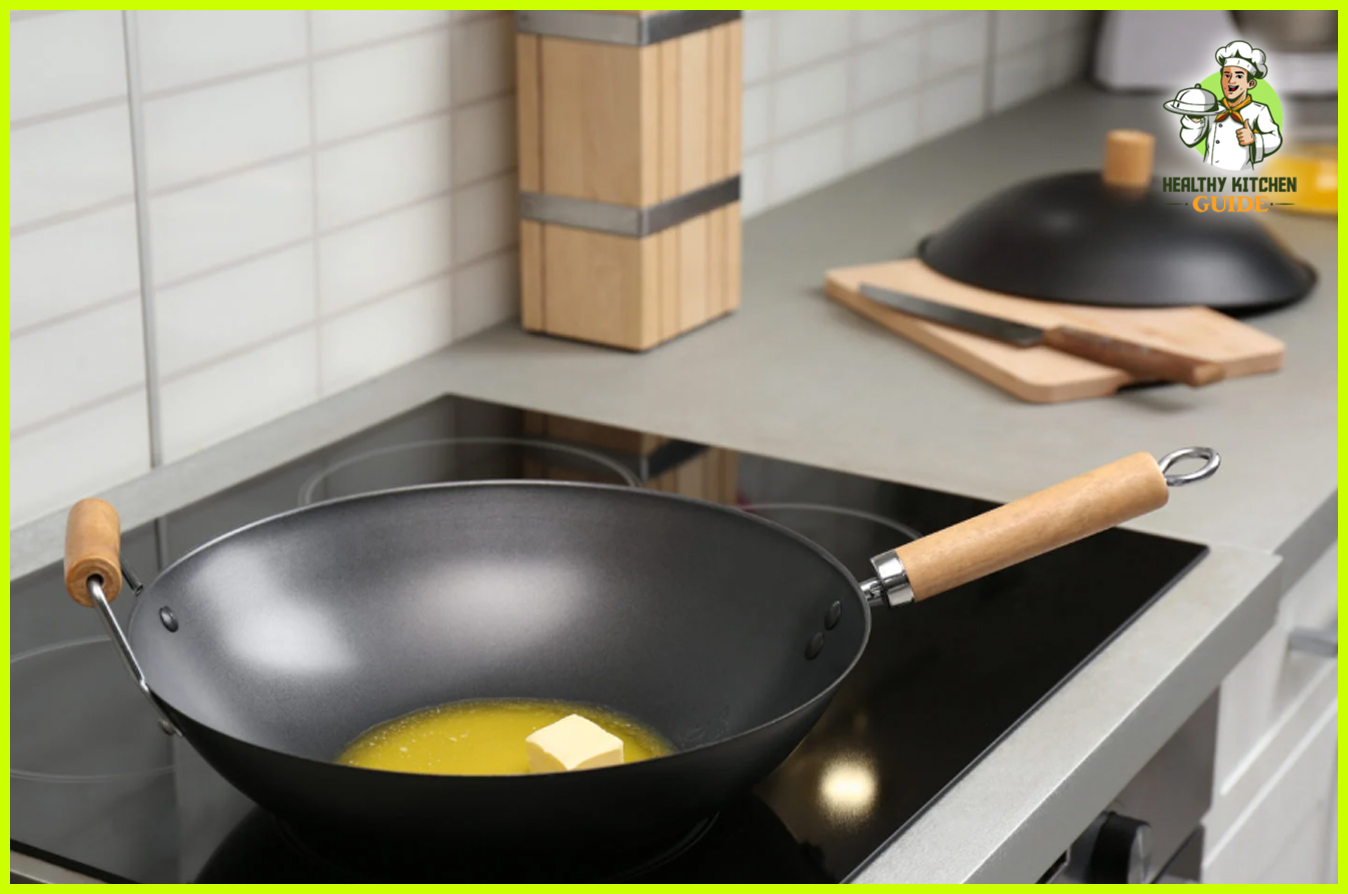To sharpen a vegetable peeler, hold the peeler at a 45-degree angle, stroke the blade against a sharpening stone or a sandpaper-covered block, and repeat on the other side until sharp. A sharp vegetable peeler is an essential tool in any kitchen, allowing for effortless peeling of fruits and vegetables.
Over time, the blade of the peeler can become dull, making peeling a frustrating chore. However, with a few simple techniques, you can easily sharpen your vegetable peeler and restore its effectiveness. We will explore the step-by-step process of sharpening a vegetable peeler and provide some useful tips for maintaining its sharpness.
By following these instructions, you will be able to enjoy smooth and efficient peeling again in no time.
Why Sharpness Matters For Vegetable Peelers
In the kitchen, having a sharp vegetable peeler is essential for efficient and precise peeling. A sharp peeler allows you to effortlessly remove the skin from vegetables, saving time and effort in the process. Not only does a sharp peeler make peeling easier, but it also ensures that you get clean and smooth peels, resulting in aesthetically pleasing dishes. Additionally, using a sharp peeler helps to retain the nutritional value of the vegetables. When you use a dull peeler, you may end up removing more of the vegetable flesh along with the skin, leading to unnecessary waste. In contrast, a sharp peeler allows you to remove only the outermost layer, preserving the valuable nutrients inside. Overall, choosing a sharp vegetable peeler has many benefits, including time-saving, improved aesthetics, and nutrient retention.
Signs That Your Vegetable Peeler Needs Sharpening
Is your vegetable peeler struggling to make clean, smooth cuts? It may be time to sharpen it. Here are a few signs that indicate your peeler needs sharpening:
| Cutting effectiveness: | When your peeler starts to lose its sharpness, you’ll notice that it takes more effort to peel vegetables. The blade may start skipping or slipping, resulting in uneven or jagged cuts. |
| Dull blade: | Inspect the blade closely. If you see visible signs of wear and tear, such as nicks, scratches, or a dull surface, it’s a clear indication that your peeler needs sharpening. |
| Increased resistance: | If you feel increased resistance when peeling, it means the blade is unable to glide smoothly through the vegetables. This can be due to a lack of sharpness. |
| Slower peeling speed: | A sharp peeler allows you to peel vegetables quickly and effortlessly. If you find yourself struggling and spending more time than usual, it’s a sign that your peeler needs sharpening. |
Recognizing these signs will help you determine when it’s time to sharpen your vegetable peeler. Keeping your peeler sharp ensures efficient and smooth peeling, making your kitchen tasks easier and more enjoyable.
Easy Steps To Sharpen Your Vegetable Peeler
To sharpen your vegetable peeler, you’ll need a few essential tools. These include a whetstone, sharpening steel, or fine-grit sandpaper. Whichever tool you choose, make sure it is clean and in good condition before starting the sharpening process. Having the right tools is crucial for achieving the best results.
Before you begin sharpening, it’s important to clean your vegetable peeler thoroughly. Use warm soapy water to remove any debris or food particles that may be stuck to the blades. Rinse it properly and make sure it is completely dry before moving on to the next step. Cleaning your peeler beforehand will ensure a clean and precise sharpening process.
Sharpening your vegetable peeler is a simple process that can be done in just a few steps. Here’s how to do it:
1. Hold the peeler firmly with one hand.
2. With the other hand, position the whetstone, sharpening steel, or sandpaper against the blade at a slight angle.
3. Applying light pressure, move the peeler across the whetstone or sharpening steel in a smooth motion.
4. Repeat this process on the other side of the blade to ensure both sides are sharpened evenly.
5. Check the sharpness of the peeler by gently running it across a vegetable. If it glides effortlessly, it’s properly sharpened. If not, repeat the process until the desired sharpness is achieved.
Alternative Methods For Sharpening Vegetable Peelers
Sharpening a vegetable peeler is essential for efficient and smooth peeling. While there are various methods for sharpening peelers, it is important to explore alternative techniques to find the most suitable one for your needs.
One method to sharpen a vegetable peeler is to use a sharpening stone. This traditional tool allows you to manually hone the blade, ensuring a sharp cutting edge. Another option is to use a ceramic rod or a honing steel. By running the blade along these tools at the appropriate angle, you can restore the peeler’s sharpness.
If you prefer a more convenient approach, you can try using a handheld knife sharpener. These compact devices often come with multiple sharpening slots, allowing you to adjust the angle and sharpen the blade effectively. Alternatively, some kitchen gadget manufacturers offer specialized peeler sharpeners designed specifically for this purpose.
When evaluating the pros and cons of each method, consider factors such as ease of use, effectiveness, and cost. Ultimately, the goal is to ensure a sharp and reliable vegetable peeler that makes your peeling tasks effortless and efficient.
Safety Precautions When Sharpening Vegetable Peelers
When sharpening a vegetable peeler, it is important to prioritize safety to prevent accidents. This is especially crucial when dealing with sharp objects. Here are some necessary precautions to follow:
- Wear protective gloves: To minimize the risk of cutting yourself, always wear appropriate gloves that provide a good grip.
- Use a stable surface: Place the vegetable peeler on a stable and flat surface before sharpening to ensure stability during the process.
- Secure the blade: Make sure that the blade is securely fixed in place to avoid any unexpected slippage.
- Keep fingers away: Always keep your fingers away from the blade while sharpening. Use a suitable sharpening tool like a honing stone or a whetstone.
- Sharpen in one direction: Maintain a consistent and controlled motion while sharpening, working in one direction to avoid accidental slips.
- Store safely: After sharpening, store the vegetable peeler in a secure location, away from the reach of children.
By following these safety precautions, you can effectively sharpen your vegetable peeler without any accidents or injuries.
Maintaining The Sharpness Of Your Vegetable Peeler
To maintain the sharpness of your vegetable peeler, proper storage and care are essential. Storing your peeler in a dry and clean place is important to prevent rusting and damage to the blade. Avoid storing it with other utensils that can potentially cause scratches. Cleaning your peeler after each use is also crucial. Hand wash it with warm soapy water and then dry it thoroughly. This will prevent food residue from building up and dulling the blade. Avoid putting your peeler in the dishwasher, as the harsh detergents and high heat can damage the blade. Regularly inspect the blade for any signs of damage or dullness, and sharpen it using a sharpening stone or a peeler sharpener when necessary. These maintenance practices will not only keep your peeler sharp but also extend its lifespan.
Faqs About Sharpening Vegetable Peelers
Q: How often should I sharpen my vegetable peeler?
A: It depends on the frequency of use and the type of peeler. Generally, sharpening once every few months is sufficient for most peelers. However, if you notice that your peeler is not slicing through vegetables easily or is causing jagged cuts, it’s time to sharpen it.
Q: Can I sharpen my peeler at home?
A: Yes, you can. There are a few methods you can try. One option is to use a sharpening stone or a honing rod to sharpen the blade manually. Another option is to use a knife sharpener that is suitable for peeler blades.
Q: Is it necessary to disassemble the peeler for sharpening?
A: For most peelers, disassembling is not required. However, some models may have a removable blade that can be sharpened separately. It is best to refer to the manufacturer’s instructions or check the product documentation before attempting to disassemble the peeler.
Q: Are there any safety measures I should take while sharpening?
A: Absolutely. It is important to handle sharp objects with care. When sharpening your peeler, make sure to maintain a secure grip on the handle and keep your fingers away from the blade. Consider using cut-resistant gloves for added protection.
Q: How do I know if my peeler is beyond repair and needs replacement?
A: If you have attempted to sharpen your peeler multiple times and it still fails to perform adequately, it may be time to invest in a new one. Worn-out blades, loose parts, or irreparable damage are signs that indicate the need for a replacement.
Frequently Asked Questions For How To Sharpen Vegetable Peeler

How Do You Sharpen A Vegetable Peeler With A Nail File?
To sharpen a vegetable peeler with a nail file, hold the file flat against the blade and move it back and forth along the edge. Make sure to maintain a consistent angle and apply gentle pressure. Repeat the process until the blade becomes sharp.
Do Vegetable Peelers Get Dull?
Yes, vegetable peelers can get dull over time. Regular use can cause the blades to become less sharp, making it harder to peel vegetables. It’s important to regularly sharpen or replace the blades to ensure efficient peeling.
How Do You Sharpen A Peeler Reddit?
To sharpen a peeler, you can use a sharpening stone or a honing rod. Hold the peeler at a slight angle and glide it along the stone or rod, applying gentle pressure. Repeat on both sides until the blade is sharp.
Remember to exercise caution while handling sharp objects.
How Often Should I Sharpen My Vegetable Peeler?
Regularly sharpen your vegetable peeler when you notice it’s becoming less effective. A dull peeler can be dangerous and make peeling difficult.
What Tools Can I Use To Sharpen My Vegetable Peeler?
You can use a sharpening stone, honing rod, or even a ceramic mug bottom to sharpen your vegetable peeler at home.
How Do I Use A Sharpening Stone To Sharpen My Vegetable Peeler?
Place the sharpening stone on a flat surface, hold the vegetable peeler at a 20-degree angle, and swipe the blade against the stone in a smooth, controlled motion.
Can I Sharpen A Ceramic Vegetable Peeler?
Ceramic vegetable peelers cannot be sharpened, as they have a fixed blade. Consider replacing your ceramic vegetable peeler when it gets dull.
Conclusion
To wrap things up, maintaining a sharp vegetable peeler is essential for effortless and efficient kitchen tasks. By following the simple steps outlined in this blog post, you can easily sharpen your peeler and ensure its longevity. Keeping your peeler sharp not only saves time but also guarantees smoother peeling experiences, making your culinary adventures more enjoyable.
So, why wait? Go ahead and give your vegetable peeler the sharpness it deserves! Happy peeling!





Leave a Reply